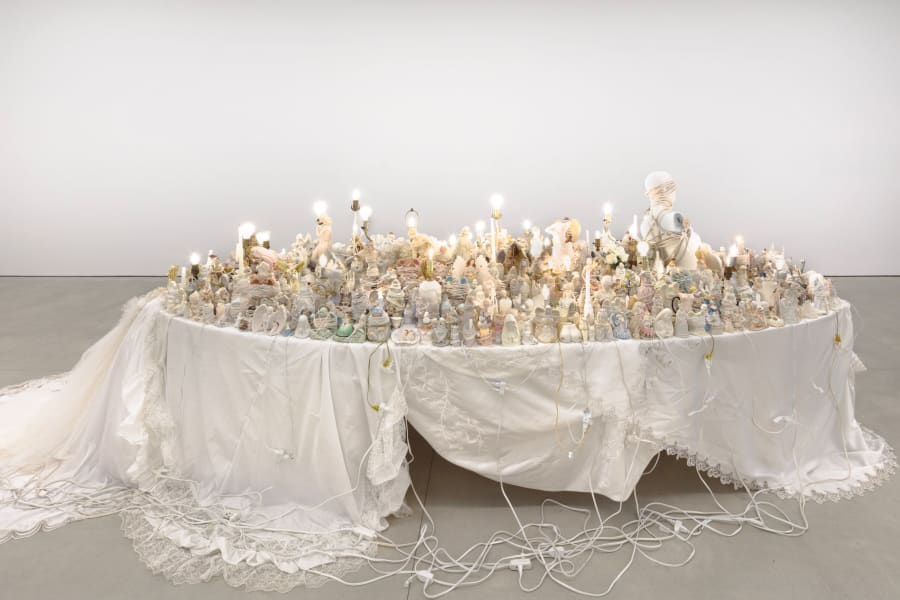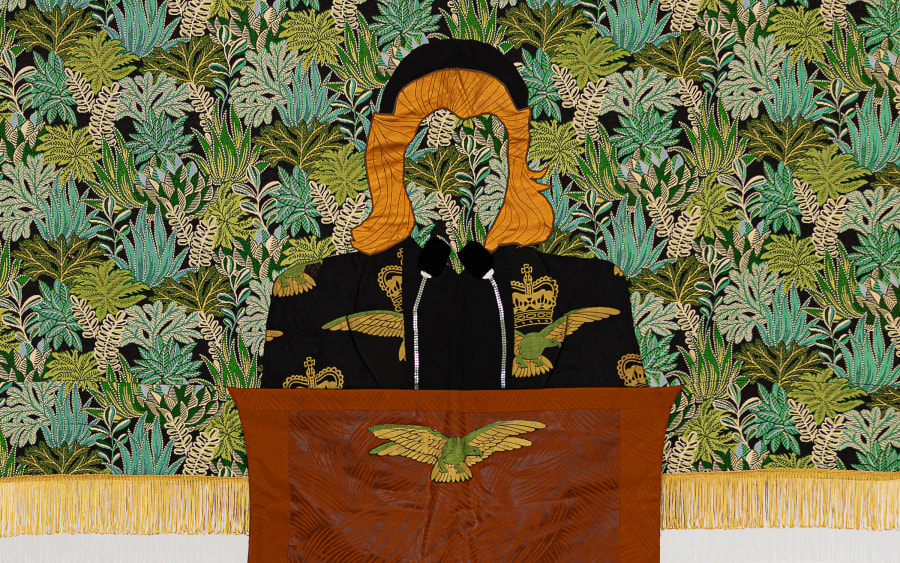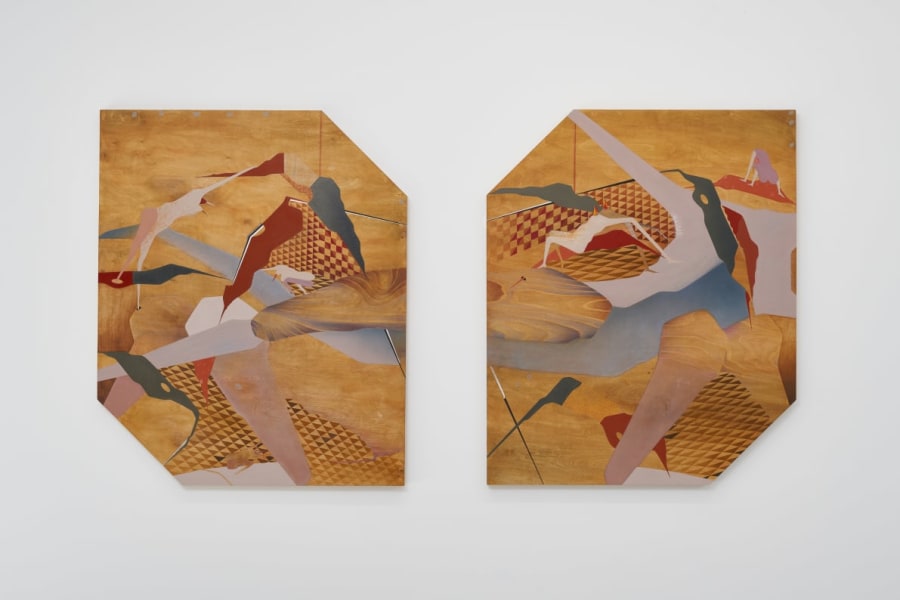‘Art was always part of my life. My mom took painting classes at the Art Students League of New York and painted at home while I was growing up and she also took me to museums every single weekend. I would go to a Spanish-language tour for kids at the Met in the morning, then we would have a little lunch, and then I’d go to a tour for kids at the Whitney. I was a regular – I saw every exhibition at those museums for a decade. I still remember a Kiki Smith sculpture of a body on all fours with a giant poo coming out the back [Tale, 1992]. As a 6- or 7-year-old, that blew my mind.
‘My mom did this without the intention of making me an artist. She considered it important for a well-rounded education. By the time I went to college, I had also taken 10 classes at Columbia in Spanish literature and French literature, so I had a liberal arts experience. At 17, I was very confused why someone would major in Spanish literature and then go and work in real estate. My parents had very practical educations – my father studied law; my mother studied pharmacy – so I went to business school [at the Wharton School at the University of Pennsylvania].
‘I was interested in finance, and I continue to be – I invest quite a bit, and I have grown to see it as a reflection of my moral and aesthetic priorities. But I am also a creative romantic. I took a photography class in my sophomore year just so I could learn how to use my camera better. It was with a professor named Jamie Diamond, who is also an artist, and it was a transformational moment. I had taken art classes in high school, but this immediately clicked. There was something about photography and it being very conceptual and philosophically driven that unlocked artmaking as a method of understanding or investigating the world for me. From there, things progressed quickly. By the time I was a senior, I was ready to take the risk of, “I’m going to try to get an MFA and become an artist instead of going to work on Wall Street.”
‘I got into the photography MFA program at Yale, and I thought a lot about how images and artworks can have value. With painting, you have physical labor as an index on the canvas. But with photography, there isn’t that same index of value. Photographs are ubiquitous; everybody can become a pretty good photographer, so, conceptually, what gives an image value? At the same time, Bitcoin suddenly broke all systems of value – an anonymous individual created a system of value entirely from scratch. I wanted to create value, and I felt like creating a currency as an artwork would be the artwork to end all artworks. This led to Bitchcoin, a cryptocurrency backed by physical artworks. Each token corresponded to 25 square inches of a photograph.
‘Sometimes I feel like I have to thank my younger self, because I made three pivotal projects in a very short period of time. I launched Bitchcoin in 2015. Then I did a project called Stock Performance in which I day-traded to intentionally move the stocks’ performance lines and then painted the lines on canvases in a performance at 303 Gallery in January 2016. That summer I then filmed Cloud of Petals, a 16 mm short film showing 16 workers as they photograph 100,000 individual rose petals. The film was exhibited in 2017, and the massive dataset they were compiling was used to develop an artificial intelligence algorithm that can generate new unique petals forever. Bitchcoin was about use value and exchange value, both as an artwork and as a financial mechanism, because it wasn’t a performance; it was real. Same thing with Stock Performance – it had to be my trades actually moving the market – and Cloud of Petals: I could have faked it; I could have not photographed 100,000 rose petals and could have still made a great short film. But the drive was how to identify, create, outline, and delineate value in our world, and the reality of it mattered – something I’m still trying to do, although in a more diffuse way.
‘Today, we are on the precipice of humanity totally shifting, and making art about it feels very difficult, partly because it is happening so fast, so you can’t be one step ahead. So, I’ve shifted more towards trying to make things that speak to someone directly in the moment, rather than being linked to a specific time, to 2024. So many digital works are reliant on the software that created them, but I am working with technologies that are not reliant on a company – I have many collaborators, people working to push technology within the studio. Most recently, we’ve been working with holograms and a custom 6-foot-by-6-foot plotter to make pastel drawings.
‘With the holograms, I have complete peace of mind that in 300 years, they will still work. With the pastels, it’s a marriage of something very messy and material with the precision of robotics. I’m interested in it because it approaches drawing in a way that a human would never be able to do – a human hand would never be able to draw these pastels in this way because you would get carpal tunnel, and your brain is not thinking computationally about how to lay down color.
‘My work today is less sensational than it was at the beginning and, let’s be clear, pastels don’t tickle the finance bros the way a stock performance does. But throughout my practice, I’ve been trying and continue to try to create things that give people a moment of beauty and transcendence, and I’m trying to do so in a way that uses technology not for the sake of using it but in order to create experiences that don’t otherwise exist.’
Sarah Meyohas is represented by Marianne Boesky Gallery (New York, Aspen). Her work will be presented in the Meridians sector at Art Basel in Miami Beach.
Emily McDermott is a writer and editor living in Berlin.
Top image: Sarah Meyohas, Interference #18, 2023. On view at Art Basel Miami Beach 2024. © of the artist.
Published on November 13, 2024.


